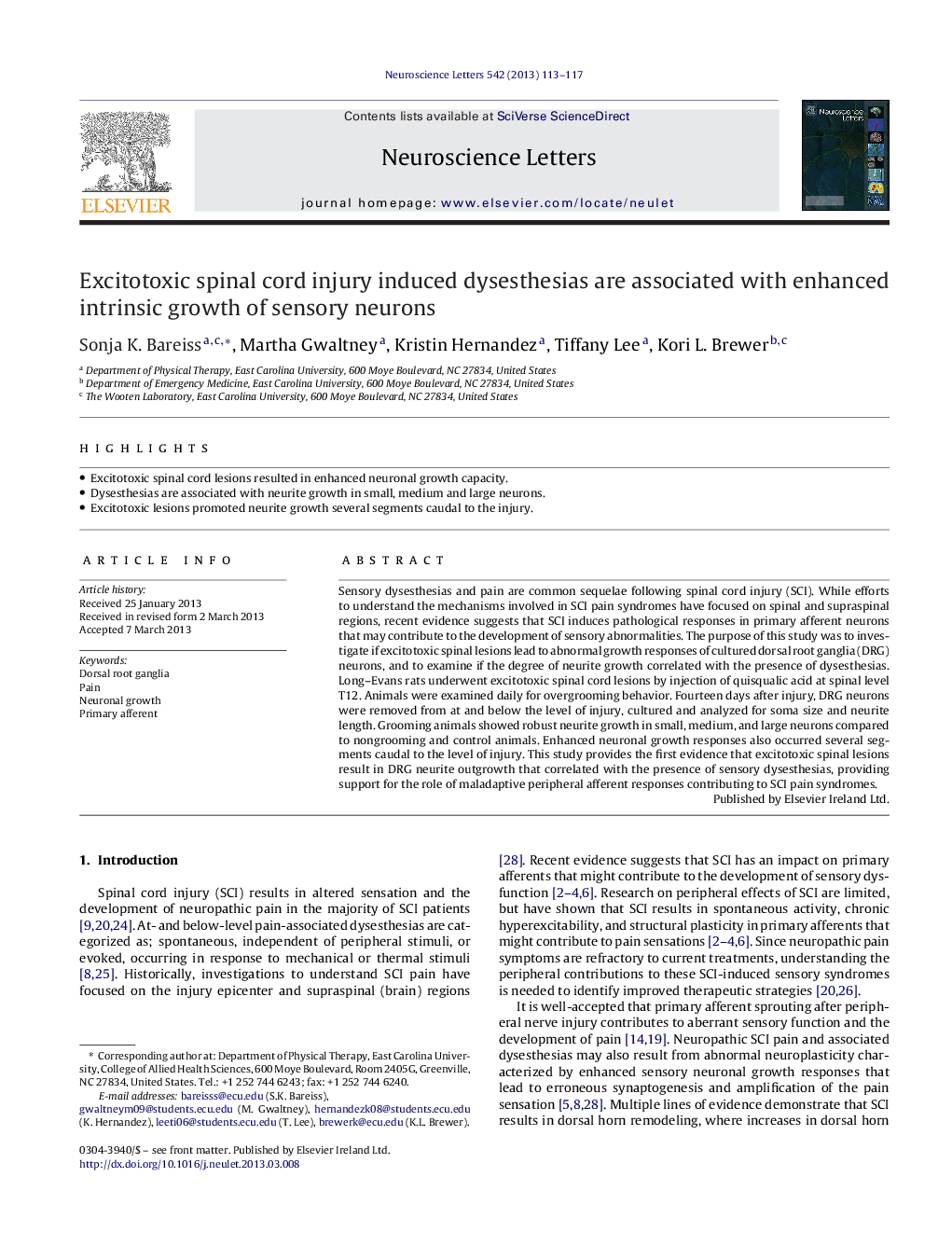| Article ID | Journal | Published Year | Pages | File Type |
|---|---|---|---|---|
| 6283339 | Neuroscience Letters | 2013 | 5 Pages |
Abstract
Sensory dysesthesias and pain are common sequelae following spinal cord injury (SCI). While efforts to understand the mechanisms involved in SCI pain syndromes have focused on spinal and supraspinal regions, recent evidence suggests that SCI induces pathological responses in primary afferent neurons that may contribute to the development of sensory abnormalities. The purpose of this study was to investigate if excitotoxic spinal lesions lead to abnormal growth responses of cultured dorsal root ganglia (DRG) neurons, and to examine if the degree of neurite growth correlated with the presence of dysesthesias. Long-Evans rats underwent excitotoxic spinal cord lesions by injection of quisqualic acid at spinal level T12. Animals were examined daily for overgrooming behavior. Fourteen days after injury, DRG neurons were removed from at and below the level of injury, cultured and analyzed for soma size and neurite length. Grooming animals showed robust neurite growth in small, medium, and large neurons compared to nongrooming and control animals. Enhanced neuronal growth responses also occurred several segments caudal to the level of injury. This study provides the first evidence that excitotoxic spinal lesions result in DRG neurite outgrowth that correlated with the presence of sensory dysesthesias, providing support for the role of maladaptive peripheral afferent responses contributing to SCI pain syndromes.
Related Topics
Life Sciences
Neuroscience
Neuroscience (General)
Authors
Sonja K. Bareiss, Martha Gwaltney, Kristin Hernandez, Tiffany Lee, Kori L. Brewer,
